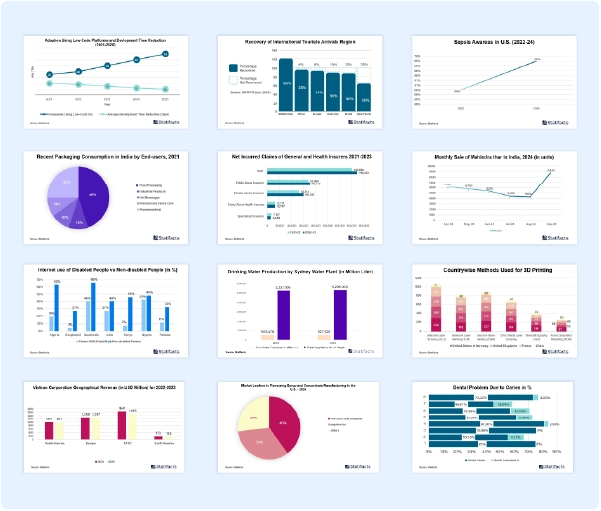The global cell therapy raw materials market size was evaluated at USD 4,690 million in 2024 and is expected to grow around USD 24,970 million by 2034, registering a CAGR of 18.2% from 2025 to 2034.
Cell Therapy Raw Materials Market Report Highlights
- By product, the cell culture supplements segment dominated the market in 2024.
- By product, the media segment is observed to be the fastest growing in the market during the forecast period.
- By end-use, the biopharmaceutical & pharmaceutical companies segment dominated the market in 2024.
- By end-use, the CMOs & CROs segment is observed to be the fastest growing in the market during the forecast period.
- North America dominated the cell therapy raw materials market in 2024.
- Asia- Pacific is observed to be the fastest growing in the market during the forecast period.
Industry Valuation and Growth Rate Projection
| Industry Worth |
Details |
| Market Size in 2025 |
USD 5,540 Million |
| Market Size by 2034 |
USD 24,970 Million |
| Market Growth Rate from 2025 to 2034 |
CAGR of 18.2% |
The cell therapy raw materials market deals with substances and chemicals utilized during the production of gene therapy, cell therapy, or tissue-engineered products that are not intended to be part of the final product. These raw materials include cell isolation reagents, cryopreservation media, culture, and disposables, like bioprocessing bags and plastic ware. They can significantly impact its safety, consistency, and efficacy. Thus, raw materials need to be inspected in terms of their biological and chemical properties, along with their impacts on the final cell therapy product.
North America dominates the cell therapy raw materials market as it has an exceptionally advanced and innovative healthcare infrastructure, making it possible for advanced cell therapy research and development. Remarkable investments in advanced technologies, combined with extensive research initiatives, have led to the continuous progress of cell therapy, and also the presence of major biotechnology firms actively engaged in cell therapy drives market expansion.
Asia-Pacific is expected to be the fastest-growing region in the cell therapy raw materials market during the forecast period because of its growing healthcare infrastructure incidence of chronic disorders and degenerative diseases. This trend has stimulated the demand for innovative cell therapies. These therapies provide effective solutions for conditions like cardiovascular diseases, cancer, and neurological diseases, thus boosting the demand for raw materials in their production. Furthermore, the supportive regulatory environment in various countries such as China and India is contributing to the expansion of the market.
Due to the early success of certain cell therapy activities, large populations are targeted by wider programs, which began with leukemia and are presently aiming at lymphomas. Multiple myeloma is the most challenging, with the highest possibility of positive outcomes. The notable significance of cell and gene therapy lies in its ability to utilize the body’s systems, whether through the capability to replace or repair defective cells, the cellular immune system, or missing genes. Thus, these therapies are better alternatives for personalized medicine. Most of these therapy innovators are research universities or small biotech start-ups; these firms work together with larger pharma firms to develop customized targeted therapy. Considering the availability of funding in the present cell therapy raw materials market, these firms have a huge opportunity to secure funds and transform their clinical programs across multiple therapeutic fields.
The high cost of cell therapy innovation can delay market expansion in the upcoming years. High-cost raw materials, complex production, and strict regulations make manufacturing costly. The manufacturing of cell and gene therapies is immensely complex, and production capacity is an extreme limiting factor in serving more patients. Cell and gene therapies usually require lengthy processes that can take weeks to finish as an individual’s cells are gathered, multiplied, and modified in a laboratory. The production of viral vectors is costly because of low output due to low transfection efficiency.
In the cell therapy raw materials market, AI mostly enhances the optimization and characterization of cell products, such as mesenchymal stem cells, by forecasting their potency and functions. Moreover, AI improves advanced microscopy techniques, allowing non-invasive, accurate, as well as quantitative determination of live cell cultures. AI advances tissue engineering by improving biomaterial and scaffold designs, forecasting interactions with tissues, and simplifying development. This contributes to a quicker and more cost-effective revolution by lowering trial and error. Further, AI algorithms need vast amounts of high-quality data to forecast results accurately.
The crossroads of cell therapy and regenerative medicine create new tissue repair as well as regeneration opportunities. As regulatory systems accept the unique challenges posed by these novel therapies, collaborative efforts between industry, academia, and regulatory entities are anticipated to accelerate the translation of the latest research into accepted and widely accessible treatments.

